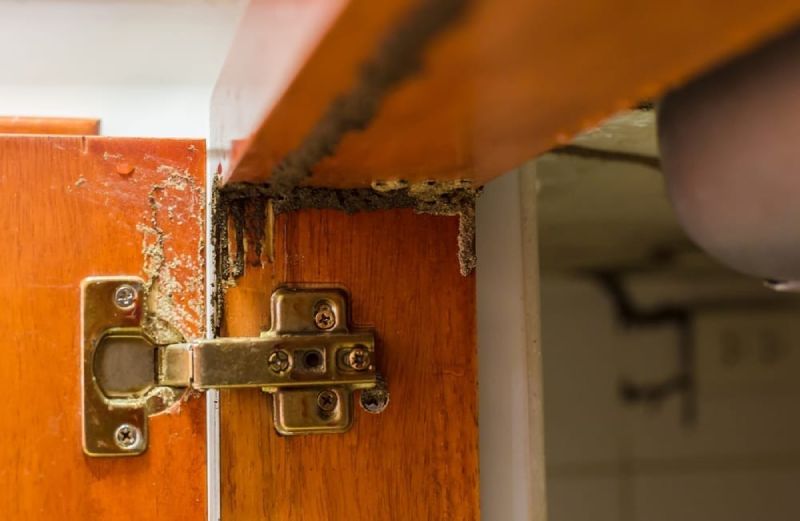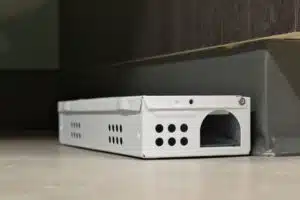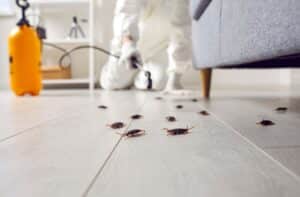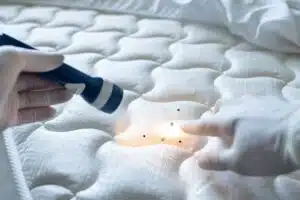When it comes to pest control, one of the single most important roles played by home or building owners is identification of pests. This begins with noting that a pest infestation is taking place, first and foremost, but in some cases may also extend to homeowners who are able to actually identify the pest type itself – a factor that can improve your circumstances and make things easier for your pest control professionals.
At A-1 Exterminators, we’re here to help with numerous pest control areas, from insect control to rodents, bird control and many other areas, including identifying pests causing issues on your property and helping you to control or eliminate them. One of the pest types that tends to cause a few issues here, largely because it looks pretty similar to a few other insects: The termite, which is also a problem because it’s highly destructive and can cause major property issues.
With this in mind, how can you be 100% sure that your termite identification is accurate if you believe you’ve found these pests on your property? Here’s a primer on how to identify termites, plus some other common pests they’re often confused with and how to tell the difference.
Termite Types in the US
Firstly, let’s give you some important basic termite information so you’re aware of it. Specifically, there are three common types of termite found most frequently in the United States:
- Subterranean termites: A cream-colored, pale termite type, some of which will come with brown heads. These types are more common in warmer climates, but are found in every state minus Alaska.
- Drywood termites: Generally pale brown, but you may see these termites in other colors ranging to dark brown and light tan. Most drywood termites have clear or gray wings, and are found in warmer states without harsh winters – meaning they aren’t as common in Utah, but can still be found.
- Formosan termites: Winged termites that are yellow-brown in color. These are technically a type of subterranean termite, but deserve their own section for their aggression and the size of their colonies, which are often up to seven times larger than other subterranean termites. These are mostly found in southeastern states.
Proper Termite Identification
In addition to the above, termites have some general characteristics that tend to be shared between all of them. All termites, for instance, are around a half-inch in length or smaller, and all will come with a straight waist rather than any kind of narrowing (the sort you might see on ants, for instance). They have straight antennae and, for those species that have wings, these wings will be of equal length.
Another important theme for termite identification is their common locations. They are known to nest in and damage wood structures of numerous types, and also thrive in soil – though many types don’t require soil at all, and can build colonies above-ground if needed.
Our next few sections will go over other pests that are sometimes mistaken for termites, plus how you can spot the differences – which almost always relate to types of damage, rather than their actual appearance.
Powderpost Beetles
Termites are known for the damage they can create to structures, and this is the main reason why they’re sometimes mistaken for powderpost beetles. This form of beetle, similar to the termite, burrows into wood while feeding, breaking it down into a powdery substance in the process. Homeowners will often see this powder and small holes in their wood, and will naturally assume they have termites.
However, there are some signs that you might actually be dealing with beetles instead. For one, they look very different: They’re a bit smaller, plus range from reddish-brown to black in color. They also have a more cylindrical body than a termite. Whether you even see them at all is also commonly a sign – powderpost beetles are sneakier than termites and are often never seen by homeowners.
Carpenter Ants
Another pest type that causes similar damage to the termite is the carpenter ant, which also swarms during its mating cycle – a known characteristic of termites. However, there are a few basic signs that will help you realize you’re not actually dealing with termites, but rather ants:
- Instead of a straight waste, carpenter ants have a tapered waist
- Carpenter ants are noticeably larger than termites
- Carpenter ants have unequal wings – rear ones are shorter than front ones, unlike termites
- Carpenter ants have dark coloring rather than lighter coloring
It’s important to note that, while carpenter ants can create major wood damage, they don’t actually eat the wood – which termites do. However, they still tunnel and make nests within wood, meaning they’re a pest that must be handled expediently.
Carpenter Bees
Staying within the carpenter realm, the carpenter bee is another that causes similar damage to a termite, and is often mistaken for it as a result. Like the carpenter ant, carpenter bees don’t actually feed on wood, but rather tunnel into and nest within it – though their holes can be up to an inch in diameter, much larger than carpenter ants.
The simplest way to spot a carpenter bee separate from termites is to see it – the carpenter bee looks nothing like the termite, and much closer to a bumble bee (only with smooth, shiny abdomens instead of yellow, hairy ones). If you don’t see any of either insect, however, and only their damage, be aware that termites tend to do a bit more damage than carpenter bees – but you may need professional assistance with this identification.
For more on telling termites apart from other pests that often look similar to them, or to learn about any of our pest control or exterminator services, speak to the staff at A-1 Exterminators today.



